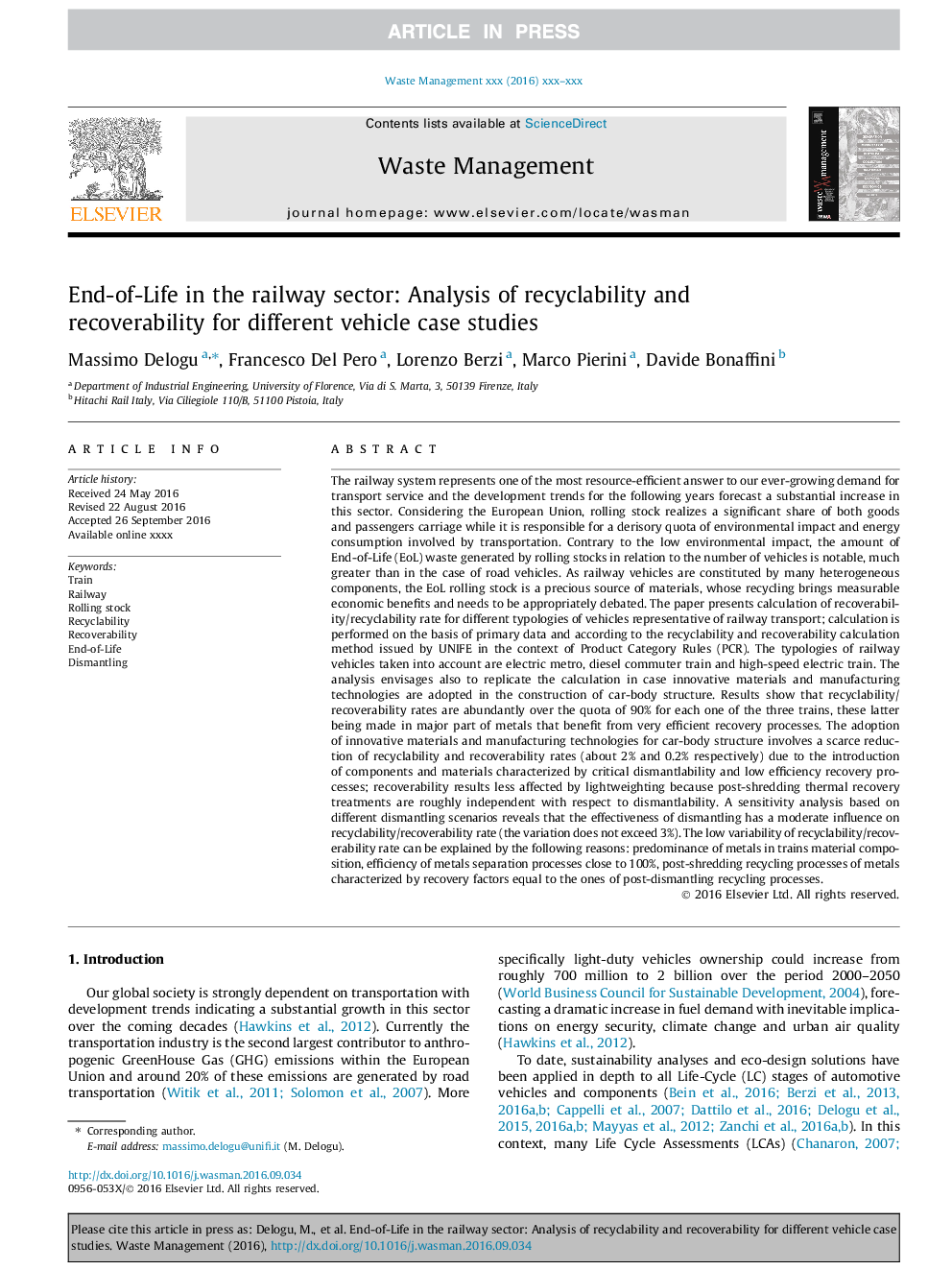| کد مقاله | کد نشریه | سال انتشار | مقاله انگلیسی | نسخه تمام متن |
|---|---|---|---|---|
| 5756805 | 1622626 | 2017 | 12 صفحه PDF | دانلود رایگان |
عنوان انگلیسی مقاله ISI
End-of-Life in the railway sector: Analysis of recyclability and recoverability for different vehicle case studies
ترجمه فارسی عنوان
پایان زندگی در بخش راه آهن: تجزیه و تحلیل قابلیت بازیافت و بازیابی برای مطالعات موردی مختلف خودرو
دانلود مقاله + سفارش ترجمه
دانلود مقاله ISI انگلیسی
رایگان برای ایرانیان
کلمات کلیدی
قطار - تعلیم دادن، راه آهن، رانندگی، بازیافت بازیابی پایان زندگی، تخریب
موضوعات مرتبط
مهندسی و علوم پایه
علوم زمین و سیارات
مهندسی ژئوتکنیک و زمین شناسی مهندسی
چکیده انگلیسی
The railway system represents one of the most resource-efficient answer to our ever-growing demand for transport service and the development trends for the following years forecast a substantial increase in this sector. Considering the European Union, rolling stock realizes a significant share of both goods and passengers carriage while it is responsible for a derisory quota of environmental impact and energy consumption involved by transportation. Contrary to the low environmental impact, the amount of End-of-Life (EoL) waste generated by rolling stocks in relation to the number of vehicles is notable, much greater than in the case of road vehicles. As railway vehicles are constituted by many heterogeneous components, the EoL rolling stock is a precious source of materials, whose recycling brings measurable economic benefits and needs to be appropriately debated. The paper presents calculation of recoverability/recyclability rate for different typologies of vehicles representative of railway transport; calculation is performed on the basis of primary data and according to the recyclability and recoverability calculation method issued by UNIFE in the context of Product Category Rules (PCR). The typologies of railway vehicles taken into account are electric metro, diesel commuter train and high-speed electric train. The analysis envisages also to replicate the calculation in case innovative materials and manufacturing technologies are adopted in the construction of car-body structure. Results show that recyclability/recoverability rates are abundantly over the quota of 90% for each one of the three trains, these latter being made in major part of metals that benefit from very efficient recovery processes. The adoption of innovative materials and manufacturing technologies for car-body structure involves a scarce reduction of recyclability and recoverability rates (about 2% and 0.2% respectively) due to the introduction of components and materials characterized by critical dismantlability and low efficiency recovery processes; recoverability results less affected by lightweighting because post-shredding thermal recovery treatments are roughly independent with respect to dismantlability. A sensitivity analysis based on different dismantling scenarios reveals that the effectiveness of dismantling has a moderate influence on recyclability/recoverability rate (the variation does not exceed 3%). The low variability of recyclability/recoverability rate can be explained by the following reasons: predominance of metals in trains material composition, efficiency of metals separation processes close to 100%, post-shredding recycling processes of metals characterized by recovery factors equal to the ones of post-dismantling recycling processes.
ناشر
Database: Elsevier - ScienceDirect (ساینس دایرکت)
Journal: Waste Management - Volume 60, February 2017, Pages 439-450
Journal: Waste Management - Volume 60, February 2017, Pages 439-450
نویسندگان
Massimo Delogu, Francesco Del Pero, Lorenzo Berzi, Marco Pierini, Davide Bonaffini,
